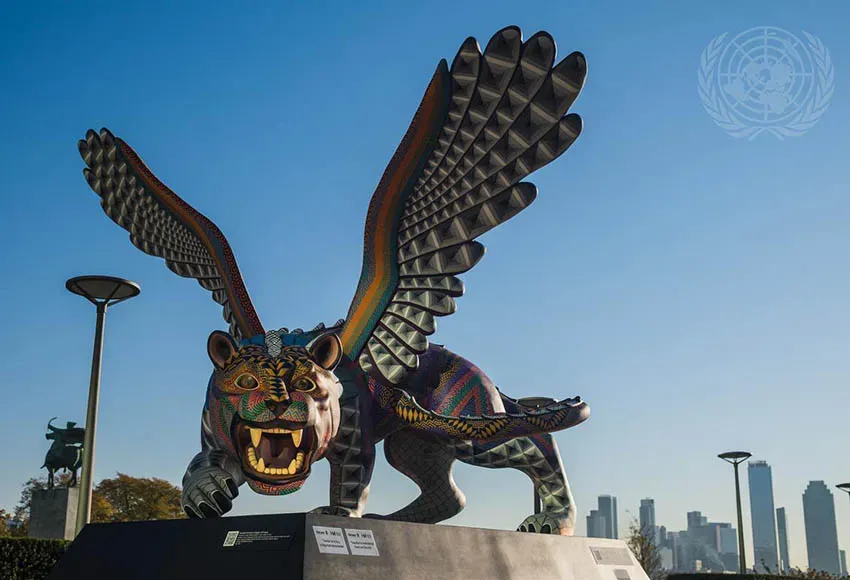In an apparent concession to evangelical Christians, the United Nations has removed a folk art sculpture from the Visitors Plaza outside its New York City headquarters.
The sculpture, titled "Guardian for International Peace and Security," depicts a figure from native Oaxacan folk art – the alebrije – resembling a winged lion or tiger.
Evangelicals noticed the sculpture in November, after the UN tweeted an image of the artwork, and immediately worked themselves into a frenzy over its alleged resemblance to one of the "end times" beasts described in Daniel 7:2-4. The scripture is usually interpreted as referring to kingdoms that existed at the time that portion of the Book of Daniel was composed – the mid-2nd century BCE – with the winged lion representing Babylon.
Ironically, the winged lion also symbolizes St. Mark the Evangelist in mainstream Christian art and found its way on to the coat of arms of the renaissance Republic of Venice, whose patron saint was St. Mark.
According to the UN, "The guardian is a fusion of jaguar and eagle," not a winged lion at all, "and is donated by the Government of Oaxaca, Mexico. It is created by artists Jacobo and Maria Angeles."
Before being displayed at UN headquarters, the sculpture was displayed at Rockefeller Center during Día de los Muertos celebrations. It did not draw hostile comments from evangelicals in that venue.
The Christian Post reported that public complaints forced the UN to remove the offending artwork, but Stéphane Dujarric, spokesman for the UN Secretary General, maintained that the display was only temporary and was removed as scheduled.
"The statue you refer to was a temporary exhibit organized by the Permanent Mission of Mexico to the United Nations. It was taken down, as scheduled and anticipated, on 20 December," Dujarric said in a January 4 statement.
Ricardo Angeles, son of the artists and the principal designer of the alebrije, referred to it as a "guardian" for the immigrants to the US.
"I love New York and its architecture, especially the Art Nouveau styles and the gargoyles of some buildings," Angeles said.
"I decided to create fantastical beings that also symbolized empathy and solidarity from us, the artisans who didn't immigrate, toward our family members who are here in the United States."
UN bows to evangelicals, removes folk art sculpture
Share this Post:


